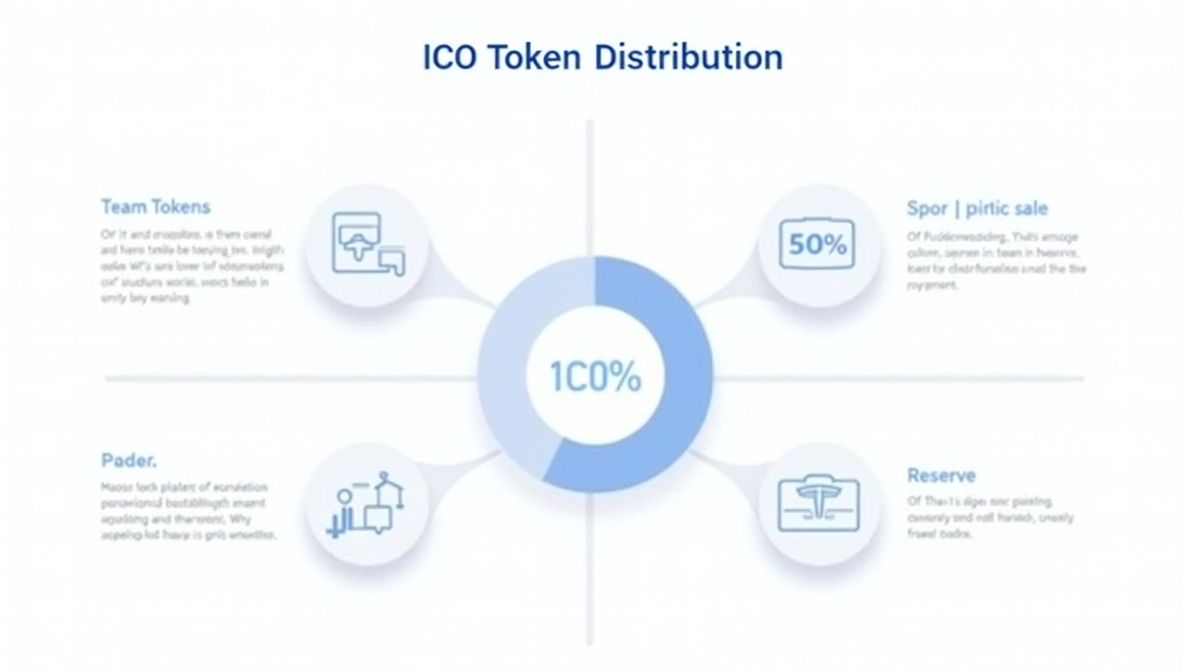In today’s digital era, trust is not built on central authorities but on technology itself. Blockchain Consensus Mechanisms are the driving force behind decentralized networks, ensuring security, transparency, and trust without a central governing body.
Whether you are new to blockchain or seeking deeper insights, this article provides clear, detailed information to help you understand how these mechanisms work and why they matter.
Understanding Blockchain Consensus Mechanisms
Blockchain Consensus Mechanisms form the backbone of decentralized systems. They define how all nodes in a network agree on transaction validity without relying on central authority. This section lays the groundwork for understanding what is consensus mechanism in blockchain and the diverse types of blockchain consensus mechanisms used in practice.
The Definition
Blockchain Consensus Mechanisms are specialized protocols that enable a distributed network to reach a common agreement on the state of the ledger. They solve complex problems—such as ensuring that even when some nodes are unreliable or malicious, every participant sees the same transaction history.
The Role of Consensus in Security and Functionality
Consensus is critical for maintaining security and functionality in blockchain networks. By enforcing network-wide agreement, these mechanisms prevent double-spending and fraudulent transactions. They help create a trustless system where no single entity controls the ledger, ensuring that every update is valid, secure, and agreed upon by all. This trustless validation is essential for any robust blockchain system.
Types of Blockchain Consensus Mechanisms

When discussing types of blockchain consensus mechanisms, it is important to note the variety available. Broadly, these include proof-based systems, voting-based protocols, and hybrid or novel approaches. Each type addresses different needs in terms of security, scalability, energy efficiency, and decentralization.
Read More: Blockchain Scalability Problems
Proof-Based Consensus Mechanisms
Proof-based mechanisms are among the earliest and most widely implemented forms of Blockchain Consensus Mechanisms. They rely on participants proving that they have expended resources—either computational power or staked value—to validate transactions.
Proof of Work (PoW): Securing the Network Through Computation
Proof of Work is the classic example of a blockchain consensus mechanism. In PoW, miners solve complex cryptographic puzzles by expending significant computational power. This process secures the network by making it prohibitively expensive for any attacker to alter the ledger.
Proof of Stake (PoS): A Sustainable Alternative
Proof of Stake shifts the focus from computational work to economic commitment. Validators are selected based on the amount of cryptocurrency they stake, which aligns their financial interests with network security. Ethereum’s transition to PoS has improved energy efficiency and increased transaction throughput.
Variations Within Proof-Based Models
Other proof-based variations include:
- Delegated Proof of Stake (DPoS): Where token holders vote for delegates who produce blocks.
- Proof of Authority (PoA): Utilizes a set of pre-approved validators based on reputation.
- Proof of Capacity: Uses available storage space as the resource for mining.
These variations offer additional perspectives among types of blockchain consensus mechanisms, each with its own trade-offs regarding security, decentralization, and efficiency.
Voting-Based Consensus Mechanisms
Voting-based mechanisms offer a contrasting approach to achieving consensus. Instead of relying on resource expenditure, these protocols use structured rounds of voting and message exchanges to validate transactions.
Practical Byzantine Fault Tolerance (PBFT): A Robust Voting System
PBFT is designed to overcome challenges in environments where some nodes may act maliciously. By facilitating multiple rounds of voting among nodes, PBFT achieves rapid and deterministic transaction finality. This method is particularly effective in private or consortium blockchains where participants are known, providing a clear example of a voting-based blockchain consensus mechanism.
Federated Byzantine Agreement (FBA): Flexible Trust in Decentralized Networks
Federated Byzantine Agreement allows each node to choose a set of trusted peers, forming quorum slices to validate transactions. This flexibility supports scalable networks while maintaining secure consensus. FBA is an innovative answer to what is consensus mechanism in blockchain, especially in systems that require open participation and quick finality.
Raft Consensus Algorithm: Simplicity and Efficiency
Raft focuses on leader election and log replication, making it an excellent choice for permissioned networks. Its simplicity and ease of implementation ensure strong consistency in environments where nodes are inherently trusted. Raft demonstrates how a clear and straightforward voting-based mechanism can effectively maintain consensus in blockchain systems.
Hybrid and Novel Consensus Mechanisms
Hybrid and novel approaches combine elements from both proof-based and voting-based systems or introduce entirely new paradigms. These mechanisms are at the forefront of blockchain innovation, offering tailored solutions for specific challenges.
Proof of History (PoH): Time-Stamping for Efficiency
Proof of History introduces a verifiable sequence of events through cryptographic time-stamping. By establishing a reliable timeline, PoH minimizes communication overhead while ensuring accurate transaction ordering.
Hybrid PoW/PoS Systems: Balancing Energy and Security
Hybrid models merge the strengths of PoW and PoS by using PoW for block creation and PoS for block validation, or by operating both concurrently on different network layers. This approach offers robust security and improved energy efficiency, making it a versatile answer among types of blockchain consensus mechanisms.
Emerging Models: PoET and PoI
Other innovative models include:
- Proof of Elapsed Time (PoET): Uses randomized wait times within secure environments to ensure fairness.
- Proof of Importance (PoI): Evaluates an account’s overall network contribution rather than just the stake.

Real-World Applications and Case Studies
Understanding the theory behind Blockchain Consensus Mechanisms is enhanced by examining real-world applications and case studies.
Proof of Work in Practice
Bitcoin remains the most notable example of a PoW system. Here, miners expend vast amounts of computational power to solve puzzles, thereby securing the network. This process, while energy-intensive, ensures the integrity of every transaction and creates a robust defense against fraudulent activities.
Proof of Stake and Efficiency Gains
Ethereum’s shift from PoW to PoS marks a significant milestone in blockchain evolution. By allowing validators to secure the network through staking rather than intensive computation, Ethereum has reduced energy consumption and increased throughput. This transition illustrates how PoS can provide a more efficient and sustainable answer to what is consensus mechanism in blockchain.
Delegated Proof of Stake in High-Throughput Networks
Networks such as EOS and Tron use Delegated Proof of Stake to achieve remarkable transaction speeds. In these systems, token holders vote for delegates who are responsible for block production, ensuring rapid processing and scalability. This approach offers clear advantages in scenarios where speed and efficiency are critical, albeit with some centralization trade-offs.
Voting-Based Mechanisms in Private Networks
Private and consortium blockchains, like those using PBFT, benefit from voting-based mechanisms. For example, enterprise systems leverage PBFT to achieve immediate finality and secure transactions among a limited, trusted group of nodes. This ensures that sensitive applications, such as financial systems or supply chains, operate with high reliability and speed.
Federated Byzantine Agreement in Open Networks
The Stellar network employs Federated Byzantine Agreement, where nodes select trusted peers to validate transactions. This system supports fast, low-cost cross-border payments and showcases how flexible trust models can enhance efficiency in open, decentralized networks.
Raft for Permissioned Systems
Raft is widely adopted in enterprise applications such as distributed databases. By using a leader election process and log replication, Raft ensures strong data consistency across nodes, making it a preferred choice for systems where reliability and ease of implementation are paramount.
Hybrid Models in Action
Hybrid consensus models, used by networks like Decred and Dash, combine PoW and PoS to create a balanced system. In these models, the security of PoW is complemented by the efficiency of PoS, offering a dual-layered approach that addresses the shortcomings of each individual mechanism.
Proof of History in High-Throughput Environments
Solana leverages Proof of History alongside a PoS-like system to achieve extremely high transaction speeds. By providing a verifiable timeline, PoH reduces communication overhead and significantly boosts network throughput, showcasing an innovative method of implementing Blockchain Consensus Mechanisms.
Emerging Models: PoET and PoI
Proof of Elapsed Time is applied in permissioned blockchains where fairness and low resource use are critical, while Proof of Importance, as seen in certain networks, evaluates overall contribution rather than just stake size.
Comparative Analysis of Consensus Mechanisms
A logical comparison of different Blockchain Consensus Mechanisms helps to understand their strengths and trade-offs. Below is a table that summarizes key aspects of each approach.
| Consensus Mechanism | Description | Key Attributes |
| Proof of Work (PoW) | Miners solve complex puzzles using computational power, securing the network through economic deterrence. | High security; high energy consumption; potential centralization due to specialized hardware; slower transaction throughput. |
| Proof of Stake (PoS) | Validators are chosen based on staked cryptocurrency, shifting security from computation to economic commitment. | Energy efficient; faster transactions; risk of stake centralization; complex validator selection mechanisms. |
| Delegated Proof of Stake (DPoS) | Token holders vote for delegates to produce blocks, streamlining consensus and enhancing throughput. | High throughput; democratic voting; potential concentration of power among elected delegates. |
| Proof of Authority (PoA) | Pre-approved validators secure the network based on reputation and identity, suitable for private systems. | Low energy usage; fast processing; highly centralized; ideal for permissioned networks. |
| Practical Byzantine Fault Tolerance (PBFT) | Nodes exchange messages in multiple rounds to reach consensus even if some act maliciously. | Immediate finality; strong security in controlled environments; scalability issues with large numbers of nodes. |
| Federated Byzantine Agreement (FBA) | Nodes choose trusted peers (quorum slices) to validate transactions, supporting scalable consensus in open networks. | Scalable; flexible trust model; relies on well-configured trust relationships; efficient finality. |
| Raft Consensus Algorithm | A leader is elected and transactions are replicated through log synchronization, ensuring consistency in trusted environments. | Simple; easy to implement; strong consistency; best suited for permissioned systems with inherent trust among nodes. |
| Hybrid Models (PoW/PoS) | Combines computational security of PoW with the energy efficiency of PoS, either sequentially or concurrently. | Balances security and energy efficiency; robust against attacks; integration complexity can be challenging. |
| Proof of History (PoH) | Establishes a verifiable time sequence to improve transaction ordering when used with another consensus mechanism like PoS. | Reduces communication overhead; extremely high transaction throughput; requires additional consensus layer for block validation. |
This table illustrates that each consensus mechanism offers distinct benefits and challenges. The optimal choice depends on specific application requirements, including security, scalability, energy efficiency, and decentralization.
Choosing the Right Consensus Mechanism
Selecting the appropriate blockchain consensus mechanism is a critical decision that hinges on your project’s unique needs. When determining what is consensus mechanism in blockchain for your application, consider the following factors:
Application Requirements and Use Case
Different applications have different priorities. High-value financial systems might require the robust security of PoW or PoS, while supply chain solutions might favor the speed and low latency of PBFT or hybrid models. Understanding the types of blockchain consensus mechanisms available helps in matching the right method to your specific use case.
Security, Scalability, and Environmental Considerations
Assess the level of security required, the expected transaction throughput, and the environmental impact of the consensus mechanism. For instance, while PoW offers high security, its energy consumption may be prohibitive compared to PoS or voting-based mechanisms.
Governance and Community Dynamics
Decide on the degree of decentralization and community involvement that is essential for your network. Mechanisms like DPoS allow for democratic decision-making, whereas PoA or Raft may be more appropriate for private networks with known participants.
Read More: Blockchain Governance: Building Trust and Transparency
Conclusion
Blockchain Consensus Mechanisms are fundamental to creating secure, decentralized networks. By understanding consensus mechanisms in blockchain and exploring the types of blockchain consensus mechanisms—from proof-based and voting-based to hybrid and emerging models—you can appreciate the balance between security, scalability, and efficiency. Real-world applications, such as Bitcoin’s PoW, Ethereum’s PoS transition, and private networks leveraging PBFT, illustrate the practical implications of each approach. Selecting the right consensus mechanism is key to aligning technology with application needs and ensuring a resilient, trustless system. As blockchain technology continues to evolve, these mechanisms will remain critical in shaping the future of decentralized systems.
References: Hacken, Techscience










